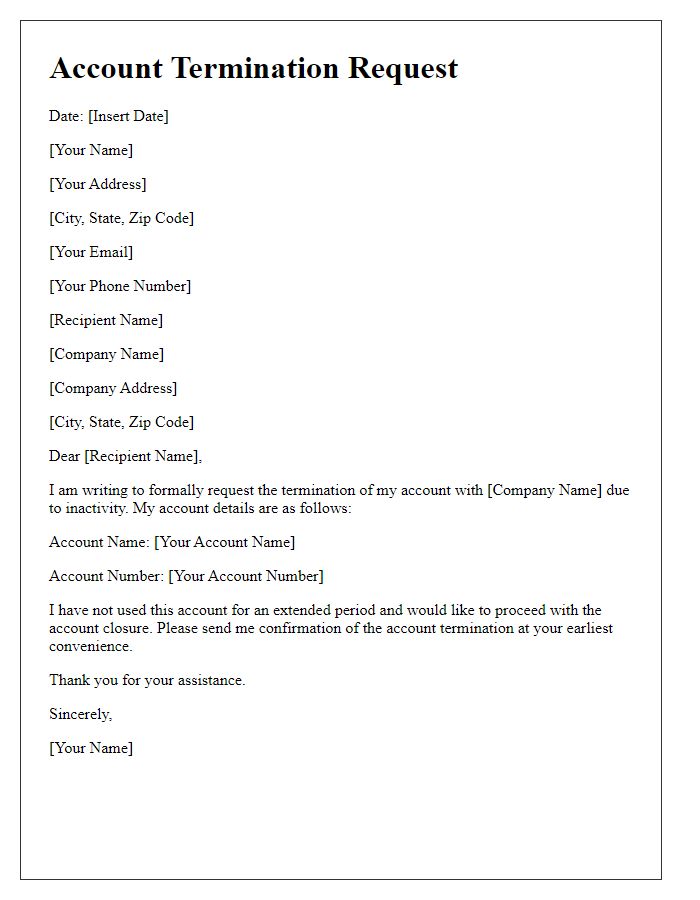Are you thinking about closing an account but not quite sure how to express your request effectively? Writing a termination letter can feel daunting, but it's easier than you might think. In just a few simple steps, you can create a clear and concise letter that communicates your intentions while maintaining a professional tone. Let's dive into the essential components of a termination request and get you started on your path to a smooth account closure!

Account Information
Account termination requests require precise details to facilitate effective processing. Providing comprehensive information such as account number, associated email address, and account creation date is essential. For example, an account number (e.g., 123456789) uniquely identifies the user within the system. The associated email address (e.g., user@example.com) ensures communication regarding the termination process. Noting the account creation date (e.g., January 15, 2020) can assist in validating the request. Additionally, stipulating the reason for termination, such as dissatisfaction with services or privacy concerns, aids in the company's understanding and future improvements. Ensuring clear structure and formal tone enhances the effectiveness of the request.
Termination Request Statement
Account termination requests often arise in various online services or platforms, such as social media accounts or subscription-based services. A formal account termination statement should include essential details, including the account holder's user ID (or email address associated with the account) and the specific platform, such as Facebook or Netflix. It is important to mention the reason for the termination, which could range from privacy concerns to dissatisfaction with services. Ensure to note any final steps required, such as clearing outstanding payments or confirming the termination via email. Specific guidelines on the platform's website can also assist in the process, ensuring compliance with their termination policies.
Reason for Termination
Requesting account termination can stem from various reasons such as dissatisfaction with service, privacy concerns, or financial constraints. Users may choose to end their subscriptions to platforms like streaming services, online stores, or membership-based applications for multiple factors. For example, transitions to alternative services can be motivated by better pricing options or enhanced user experience. Additionally, some individuals may seek to reduce digital footprints for safety and security reasons, leading to a thorough examination of data usage and account activity. Understanding these motivations helps companies refine their services and address customer concerns effectively.
Request for Confirmation
A formal account termination request requires precise details to ensure clarity and prompt action. The account holder should include the full name associated with the account and the specific account number, providing clear identification to the service provider. Include the date of the request to establish a timeline for the termination process. Request written confirmation of the account closure, ensuring that any pending balances or payments are settled. It's advisable to specify a preferred method of confirmation, such as email or postal mail to ensure accountability. Additional reference to the service provider's customer service policy may enhance the request's legitimacy, as per terms outlined in their user agreement.
Contact Information
Account termination requests require specific contact information to ensure a smooth process. This includes clearly stating the full name of the account holder, the email address associated with the account, and the phone number linked to any relevant notifications. Providing the account number or user ID can enhance identification within the system, ensuring the request reaches the correct department promptly. Additionally, specifying the reason for termination can help the service provider improve their offerings, while including a notice period, if applicable, adheres to the terms of service outlined by many companies.
Letter Template For Account Termination Request Samples
Letter template of account closure request due to service dissatisfaction













Comments